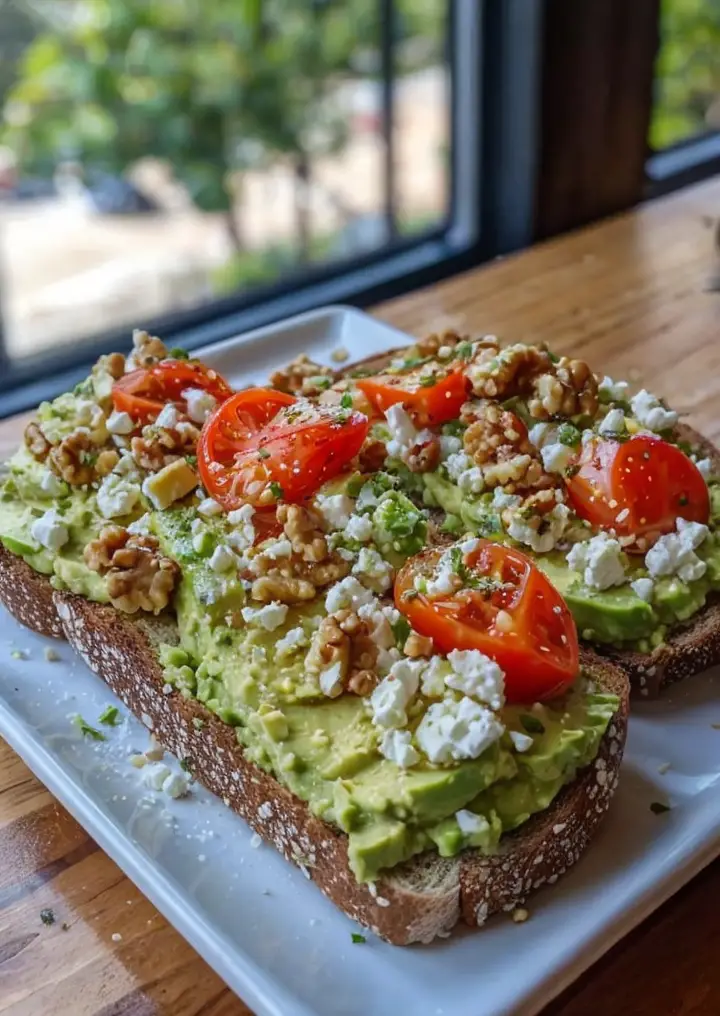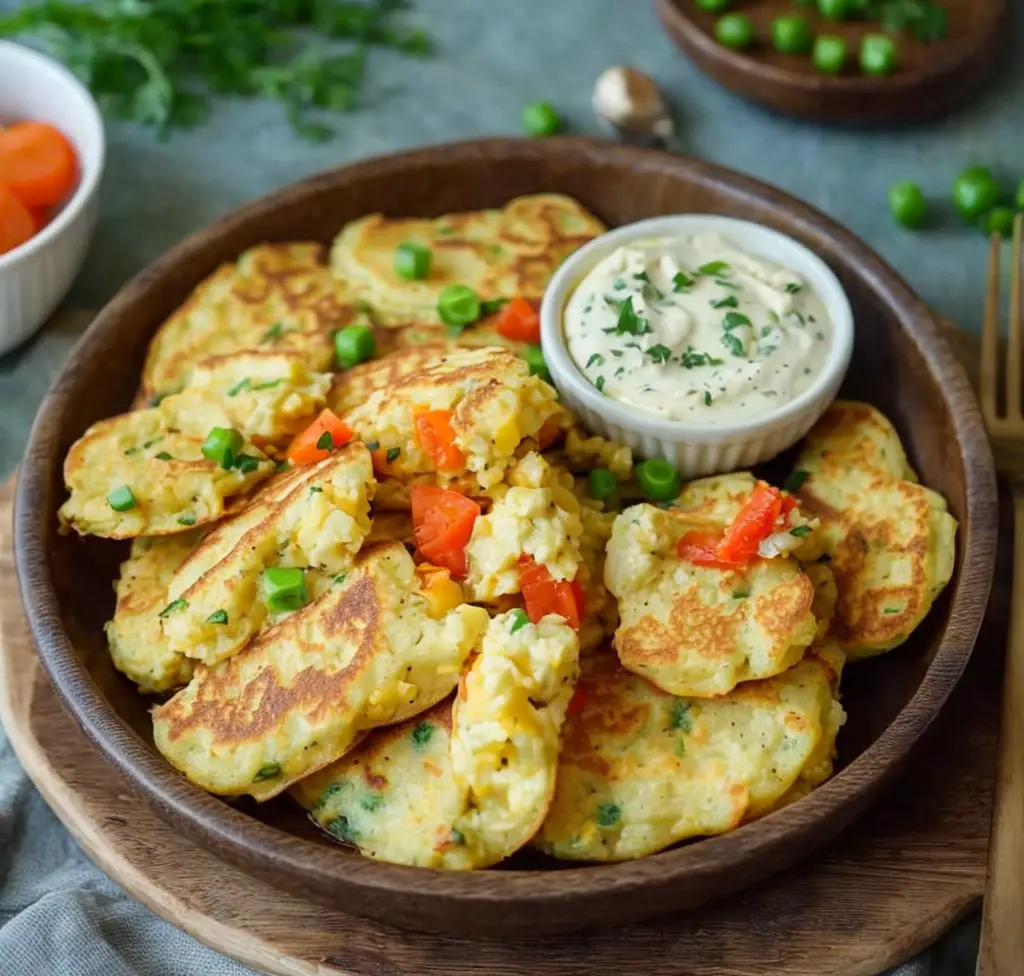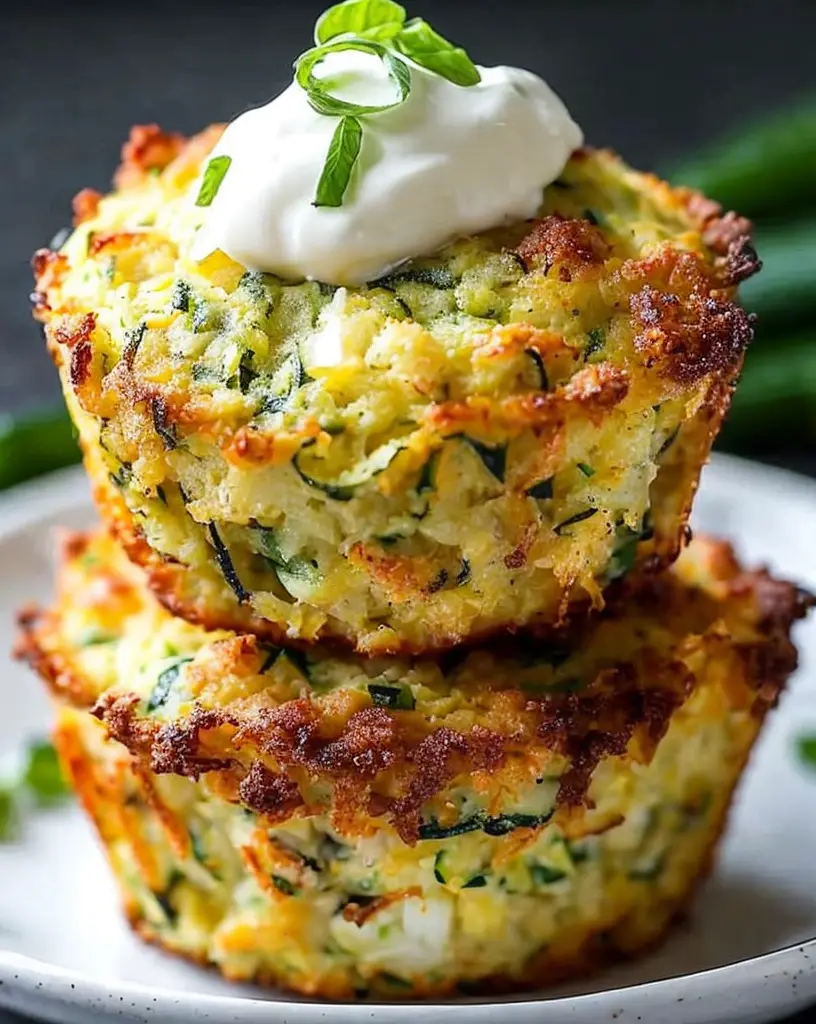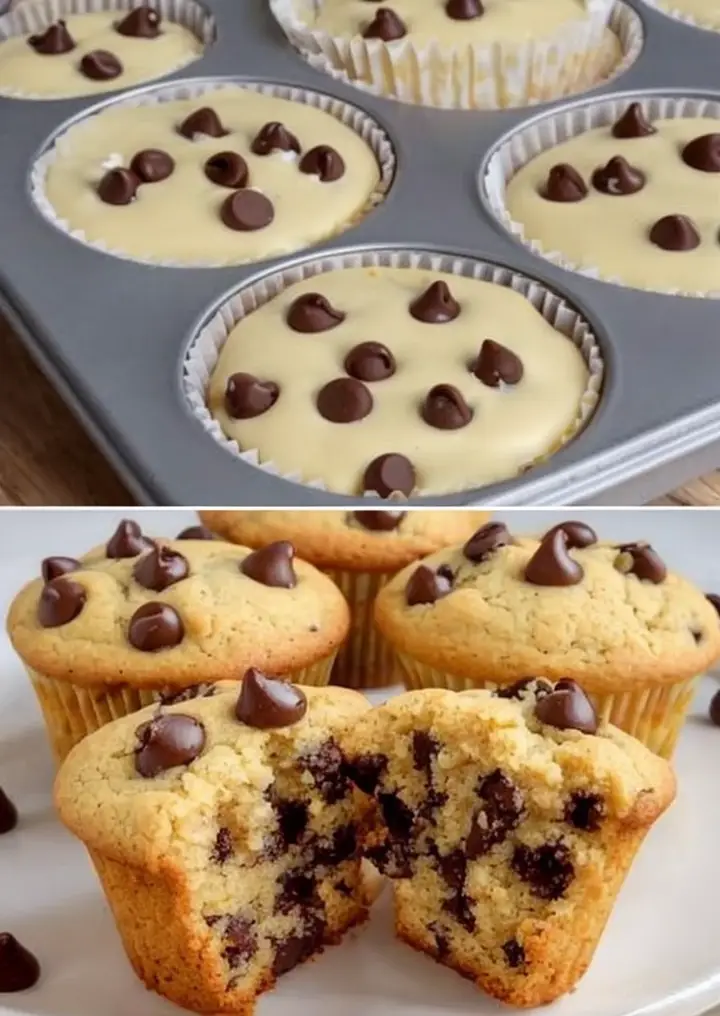Cottage Cheese Egg Bake Recipe: An Easy & Healthy Breakfast Idea
Breakfast is the most important meal of the day, and our Cottage Cheese Egg Bake Recipe offers a delicious and nutritious start to your morning routine. This easy and healthy breakfast idea combines high-protein cottage cheese with eggs, creating a fluffy and flavorful dish that is perfect for the whole family. With minimal prep time and straightforward cooking steps, this recipe is ideal for busy mornings, or when you have guests to impress with a hearty meal that doesn’t sacrifice health for taste.
As the ingredients bake together, your kitchen will fill with a delightful aroma, making it hard to resist indulging in this delectable egg bake. Whether enjoyed warm out of the oven or stored for later, you’ll love how satisfying and versatile this recipe is. Plus, it’s loaded with nutrients, making it not only a comforting breakfast but one that supports your health goals as well.
Quick Recipe Highlights
- Flavor Profile: The Cottage Cheese Egg Bake is savory, cheesy, and mildly seasoned, with the freshness of herbs and vegetables giving it a delightful zing.
- Texture: Expect a light, fluffy texture with a creamy richness from the cottage cheese and eggs, complemented by the crunchy top layer.
- Aroma: The aromatic blend of baked eggs, fresh herbs, and melted cheese will entice everyone in the household.
- Visual Appeal: This dish comes out of the oven with a beautiful golden hue, speckled with vibrant vegetables, making it a feast for the eyes.
- Skill Level Needed: This is perfect for beginners, requiring only basic cooking skills to follow the step-by-step instructions.
- Special Equipment: You will need a mixing bowl and a baking dish to prepare this delightful egg bake.
Recipe Overview
- Difficulty Level: This recipe is easy enough for anyone to tackle, making it perfect for beginner cooks looking to build confidence.
- Category: This bake falls under breakfast foods, but can also serve as a brunch dish or light lunch option.
- Cuisine: This recipe is rooted in American breakfast traditions, showcasing simple, wholesome ingredients that are both satisfying and nourishing.
- Cost: The ingredients are budget-friendly, and you can typically create this dish for around $10, depending on local prices.
- Season: You can enjoy this recipe all year round, but it’s particularly refreshing in spring and summer when fresh vegetables are in abundance.
- Occasion: It’s perfect for casual family breakfasts, weekend gatherings, or even meal prep for busy weekday mornings.
Why You’ll Love This Recipe
The Cottage Cheese Egg Bake captures the essence of flavor and texture, leaving a lasting impression with every bite. The protein-rich cottage cheese and eggs create a satisfying meal that keeps you full throughout the morning. Plus, the mild flavors make it easy to customize to your taste preferences, allowing you to experiment with different herbs, spices, and vegetables.
One of the standout features of this recipe is its convenience. A single dish can be prepared in advance and baked when you’re ready to eat. Not only does this save time in the kitchen, but it also simplifies meal prep for busy individuals or families.
On the nutritional front, this egg bake is a powerhouse packed with protein, vitamins, and minerals. Cottage cheese is known for its high protein content and low-fat profile, making it an excellent choice for health-conscious individuals. With the addition of colorful vegetables, this dish ensures you start your day with a balance of nutrients.
Socially, the Cottage Cheese Egg Bake serves as a versatile dish that can bring people together around the breakfast table. It’s perfect for serving during gatherings or family brunches, allowing everyone to enjoy a warm and comforting meal directly from the oven.
Cost-effectiveness is another winning point for this dish. Most of the ingredients are staple items found in your pantry, and any extra vegetables can easily be substituted according to what’s available. This means you can whip up a nutritious breakfast without breaking the bank.
Historical Background and Cultural Significance
The origins of the Cottage Cheese Egg Bake can be traced back to American breakfast traditions, where hearty, protein-rich meals were essential to start the day off right. Cottage cheese has been a popular ingredient in many households, especially during times when people sought healthier options or were looking to cut down on fat.
Culturally, breakfast casseroles like this one have found their way into various family gatherings and celebrations. The ease of serving a dish that can feed several people has made it a staple at holidays and brunches across the United States. Over the years, the recipe has evolved through regional variations, influencing its seasoning and additional ingredients based on local customs.
As the Cottage Cheese Egg Bake became popular, home cooks began experimenting with different veggies, cheeses, and spices, leading to unique adaptations around the world. Each variation tells a story about the region it comes from and the ingredients that are more readily available.
In many households, recipes like this are passed down through generations, making them a part of family traditions. Whether enjoyed on a busy weekday morning or during a relaxing weekend brunch, the Cottage Cheese Egg Bake holds both historical and cultural significance in American culinary heritage.
Ingredient Deep Dive
Cottage Cheese
Cottage cheese has long been cherished for its health benefits and versatility. Rich in protein and low in fat, it serves as a great ingredient for various dishes. When selecting cottage cheese, aim for curds that are moist and large. Store it in the refrigerator with an airtight lid, and it typically lasts about a week after opening. If you’re looking to substitute, consider ricotta cheese for a similar texture or Greek yogurt for a tangier flavor profile.
Eggs
Eggs are a staple in many cuisines worldwide due to their rich flavor and versatility. They provide essential nutrients, including high-quality protein, vitamins, and minerals. When buying eggs, select ones that are fresh, organic, or pasture-raised for the best flavor and nutritional value. To store them, keep them in the fridge, and they can last a few weeks. If you’re looking for alternatives, consider flaxseed or chia seeds mixed with water for a vegan option in baking.
Vegetables
Adding vegetables such as bell peppers, spinach, or kale not only enhances the flavor of the dish but also boosts its nutritional content. Fresh vegetables are usually preferred, but frozen veggies can also work well. Choose brightly colored varieties for the best flavor and nutrition. Store them in the refrigerator, and wash them just before use to maintain freshness. For substitutions, try other seasonal vegetables or even canned options in a pinch.
Common Mistakes to Avoid
- Not draining the cottage cheese: Failing to drain it can lead to excess moisture in your dish, affecting the final texture.
- Underbaking the dish: Ensuring the egg is fully set is crucial; a runny center can spoil the delightful experience.
- Overmixing the ingredients: This can create a dense texture instead of the light and airy feel we want.
- Skipping the herbs: Fresh herbs add a wonderful flavor and aroma that elevate the dish to the next level.
- Using stale ingredients: Make sure your eggs and cheese are fresh to maintain flavor and quality.
- Neglecting seasoning: A pinch of salt and pepper will enhance the overall taste; don’t forget this step.
- Not allowing the bake to rest: Give it a few minutes to set before slicing; this will improve the overall cut and presentation.
- Ignoring oven temperature: An oven that’s too hot can burn the top while leaving the insides undercooked.
- Forgetting to preheat the oven: Always preheat your oven to the correct temperature to ensure even cooking.
- Overloading on vegetables: While nutritious, too many veggies can lead to excess moisture; find the right balance.
Essential Techniques
Mixing Ingredients
Properly mixing your ingredients is essential for achieving a uniform texture in your egg bake. Take care not to overmix; just blend everything until well combined. A good visual cue is when all ingredients are homogeneously distributed without visible clumps of cottage cheese or egg.
Baking
Even baking is crucial in a dish like this where texture is key. Keep a close eye on the bake, and perform the toothpick test towards the end of the cooking time. Insert a toothpick into the center, and if it comes out clean, your dish is ready.
Resting Time
Allowing the casserole to rest after removing it from the oven is important. This lets the structure stabilize, enabling better serving. The visual cue is to allow it to cool for about 10 minutes before slicing; the edges will also start to pull from the sides of the dish.
Pro Tips for Perfect Cottage Cheese Egg Bake
1. Choose high-quality cottage cheese for the best flavor and texture; low-fat varieties work well but may be too watery.
2. Experiment with different herbs, such as dill, parsley, or chives to elevate the flavor profile of your dish.
3. Consider adding a layer of cheese on top for a beautiful, golden crust that adds extra flavor.
4. Add diced meats, such as ham or bacon, for an added protein boost, which complements the dish perfectly.
5. Use seasonal vegetables for maximum flavor and nutrition. Bell peppers and zucchini work particularly well in this bake.
6. Let your dish cool slightly before serving; this will make it easier to slice and serve without losing shape.
7. For an extra kick, consider adding a pinch of red pepper flakes to your egg mixture.
8. Always preheat your oven and check that it reaches the desired temperature before baking for the best results.
Variations and Adaptations
For a regional twist, try adding a southwestern flair by incorporating black beans and spices like cumin and coriander. Seasonal adaptations might include using squash in autumn or asparagus in the spring for freshness. Dietary modifications are also possible; for a dairy-free version, substitute cottage cheese with silken tofu blended with nutritional yeast for a cheesy flavor.
Flavor variations can be achieved by showcasing different cheeses, like feta or goat cheese, which add a distinct flavor profile to the dish. Texture modifications, such as incorporating crispy breadcrumbs or nuts on top, can add an enjoyable crunch. For presentation, consider serving your egg bake in individual ramekins for a more refined look.
Serving and Presentation Guide
When plating your Cottage Cheese Egg Bake, aim for neat slices to showcase the colorful ingredients. A sprinkle of fresh herbs on top acts as both garnish and flavor enhancer, adding a burst of color. Consider pairing it with fresh fruit or a simple salad for a well-rounded meal.
Traditional accompaniments could include crispy bacon or whole-grain toast for a complete breakfast. For modern serving suggestions, try arranging the slices on a colorful platter, allowing guests to help themselves—a great way to get everyone around the table together.
Temperature considerations are key; this dish tastes best warm. If it has cooled, quickly reheat individual servings in the microwave for a minute or so to bring back its delightful warmth. Portion control is essential, especially if serving for brunch, ensuring everyone can enjoy their fill with additional sides available.
Wine and Beverage Pairing
A crisp white wine, such as a Sauvignon Blanc, pairs beautifully with the creamy texture of the Cottage Cheese Egg Bake. The bright acidity cuts through the richness, enhancing the overall experience.
For non-alcoholic alternatives, consider serving fresh fruit juice or a lightly brewed herbal tea that complements the flavors without overpowering them. Coffee, especially a light roast, can also work well, alongside fresh cream or milk for those who prefer it.
When serving wine, keep in mind temperature considerations; enjoy your white wine chilled to enhance refreshment, while teas and coffees should be served hot for the best experience.
Storage and Shelf Life
To maximize the shelf life of your Cottage Cheese Egg Bake, store it in an airtight container in the refrigerator for up to 3 days. If you’re freezing leftovers, ensure to wrap them well in plastic wrap or aluminum foil to prevent freezer burn.
Signs of spoilage include a sour smell or off-color appearance; always trust your senses when determining whether food is still safe to consume. For reheating, warm individual portions in the microwave or place it back into the oven at a low temperature until heated throughout.
If you choose to freeze the dish, allow it to cool completely before wrapping, and it should last for about 2-3 months in the freezer. When ready to eat, defrost overnight in the fridge and reheat before serving.
Make Ahead Strategies
To make your Cottage Cheese Egg Bake ahead of time, consider prepping the ingredients the night before. Chop your vegetables and whisk together the eggs and cottage cheese to streamline the morning process.
Storing between steps can be a great way to save time. Keep chopped vegetables in the fridge and combine them with the egg mixture just before baking. This ensures freshness and optimal texture.
The impact of prepping in advance retains flavors without compromising quality. On the day of serving, assembly is quick and straightforward; just pour the mixture into your baking dish.
When reheating, heat individual portions to keep the dish fresh and delicious. Add fresh herbs or a sprinkle of cheese to enhance its flavor.
Scaling Instructions
When scaling your Cottage Cheese Egg Bake, halving or doubling is straightforward. If halving, use a smaller baking dish and reduce cooking time by a few minutes.
For doubling, use a larger baking dish or two separate dishes to ensure even cooking. Adjust the timing as needed while keeping an eye on the bake; it may take longer to cook through than in a standard-size dish.
Ensure to consider the larger or smaller portion sizes when serving. It may be wise to prepare additional sides, such as a salad or fruit, to complement the main dish when scaling.
Nutritional Deep Dive
The Cottage Cheese Egg Bake boasts a well-balanced macro breakdown, with significant contributions to protein from the cottage cheese and eggs. Each serving provides essential amino acids that are crucial for muscle repair and growth.
Micronutrient analysis reveals that this dish is rich in calcium, vitamin D, and various B vitamins, all contributing to overall health. The addition of vegetables boosts the fiber content, making it a great choice for digestive health.
Health benefits include its low-calorie nature, allowing you to enjoy a fulfilling meal without excess calories. The dish fits well in various dietary considerations, supporting weight management and overall wellness.
Keeping track of portion analysis ensures that you’re getting a nutritious meal that aligns with your dietary goals. Controlling these portions can help maintain balance within your overall diet.
Dietary Adaptations
For a gluten-free version, this Cottage Cheese Egg Bake naturally fits the bill, as it contains no grains. There are also options to craft a dairy-free or vegan version by substituting cottage cheese with tofu that has been blended with nutritional yeast to mimic the flavor.
If you’re following a low-carb or keto diet, consider reducing the number of vegetables or using alternative ingredients low in carbohydrates. The hearty fats present in the eggs will keep you satiated.
Paleo followers can enjoy this dish by ensuring all ingredients align with their dietary requirements, focusing on whole, unprocessed foods with no dairy inclusion. Low-FODMAP recommendations would involve selecting specific vegetables that are suitable for sensitive digestive systems, such as bell peppers and zucchini.
Troubleshooting Guide
If your Cottage Cheese Egg Bake turns out with a texture that is more rubbery than fluffy, this could result from overmixing. Be sure to gently fold ingredients together to maintain a light texture.
For flavor balance, if the dish ends up tasting bland, increase the seasoning next time, focusing on herbs and spices. Always taste the mixture before baking, allowing for easy adjustments.
Temperature problems can arise if your oven isn’t preheated or runs hot. Make sure to calibrate your oven regularly to avoid undercooking or burning the dish.
Equipment challenges may present themselves if you’re utilizing a new baking dish; ensure it’s appropriate for even heat distribution to avoid uneven cooking.
Ingredient substitutions are great, but if the main ingredients deviate too much from their original form, such as low-fat cottage cheese, the texture can differ significantly.
Timing concerns come into play if the recipe is not cooked for the full duration; always check for visual cues like a set middle before removing it from the oven.
Recipe Success Stories
Many community members have shared their success in creating the Cottage Cheese Egg Bake, impressing family and friends with the ease and delicious outcome. Some have enjoyed sharing how they’ve made this dish their own by adding unique ingredients or flavor combinations.
Reader suggestions have included alternative spins on the recipe, such as adding smoked salmon or sautéed mushrooms, turning it into a gourmet brunch dish that delights the palate.
Photography tips, like capturing the dish shortly after it comes out of the oven, highlight its golden crust and fresh ingredients, making it visually appealing in shared posts.
Adaptation stories also bring inspiration, with others discussing how they’ve used this egg bake recipe to cater to dietary preferences, ensuring everyone at the table can enjoy a hearty dish together.
Frequently Asked Questions
Yes, you can freeze it. Make sure it’s cooled completely before wrapping it tightly; it can last up to 2-3 months in the freezer.
How do I reheat leftovers?
Reheat in the microwave for individual servings or place the entire dish back in a preheated oven at a low temperature until heated through.
Can I use different vegetables?
Absolutely! Feel free to substitute vegetables according to your preferences or what you have on hand.
Is it possible to make this recipe dairy-free?
Yes, by swapping cottage cheese with blended tofu or using a dairy-free cheese alternative.
How do I avoid a soggy bottom?
Make sure to properly drain any excess moisture from the cottage cheese and avoid overloading with watery vegetables.
What can I serve with this breakfast bake?
It pairs well with fresh greens, fruit salads, or even a side of bacon for a hearty breakfast.
Can I use egg substitutes instead of real eggs?
You can use flaxseed or chia seed mixed with water as a binding agent to help replicate the structure in a vegan version.
How many servings does this recipe make?
This recipe makes about 4 generous servings, perfect for a family or small gathering.
What is the best way to store leftovers?
Store leftovers in an airtight container in the refrigerator for up to 3 days for optimal freshness.
Can I make this ahead of time?
Yes, you can prep the ingredients ahead of time and assemble right before baking for a quick and easy breakfast.
Additional Resources
If you’re looking for related recipes, consider trying baked oatmeal or frittatas which also provide hearty breakfast options. Technique guides on how to work with eggs and dairy can further enhance your cooking skills.
Ingredient information about cottage cheese and nutritional education can deepen your understanding of wholesome cooking. If you find you’re enjoying this recipe, exploring various equipment recommendations for better baking could also benefit you in the kitchen.
Don’t forget to explore seasonal variations by incorporating different vegetables or flavors based on what’s available near you.
Join the Conversation
We invite you to share your experiences with our Cottage Cheese Egg Bake on social media, showcasing your delicious creations. Photography tips shared by our community can inspire others to try this easy breakfast dish.
Recipe reviews often highlight personal adaptations and thoughtful feedback that go a long way in continuing the tradition of sharing delicious food. Engaging with our community through comments and suggestions ensures that we all learn from one another while enjoying the art of cooking.
Be sure to stay connected and share how you’ve made this dish your own; we love hearing about your culinary adventures!
The Recipe
Cottage Cheese Egg Bake
Serves: 4
Prep Time: 15 mins
Cook Time: 30 mins
Total Time: 45 mins
Kitchen Equipment Needed
- Baking dish
- Mixing bowl
- Whisk
- Cutting board
- Knife
Ingredients
- 2 cups cottage cheese
- 4 large eggs
- 1 cup chopped vegetables (bell peppers, onions, etc.)
- 1 cup shredded cheese (your choice)
- Salt and pepper to taste
- 1 tsp dried herbs (thyme, parsley, or your favorite)
Directions
- Preheat the oven to 350°F (175°C).
- In a mixing bowl, whisk together the cottage cheese, eggs, salt, pepper, and dried herbs until well combined.
- Fold in the chopped vegetables and shredded cheese.
- Pour the mixture into a greased baking dish and spread it evenly.
- Bake for 30 minutes or until the top is golden and the center is set.
- Allow to cool for a few minutes before slicing and serving warm.
Recipe Notes
- Feel free to experiment with different herbs and spices according to your taste preferences.
- Leftovers can be stored in an airtight container in the refrigerator for up to 3 days.
- This dish can be frozen; ensure you wrap it tightly for the best results.










